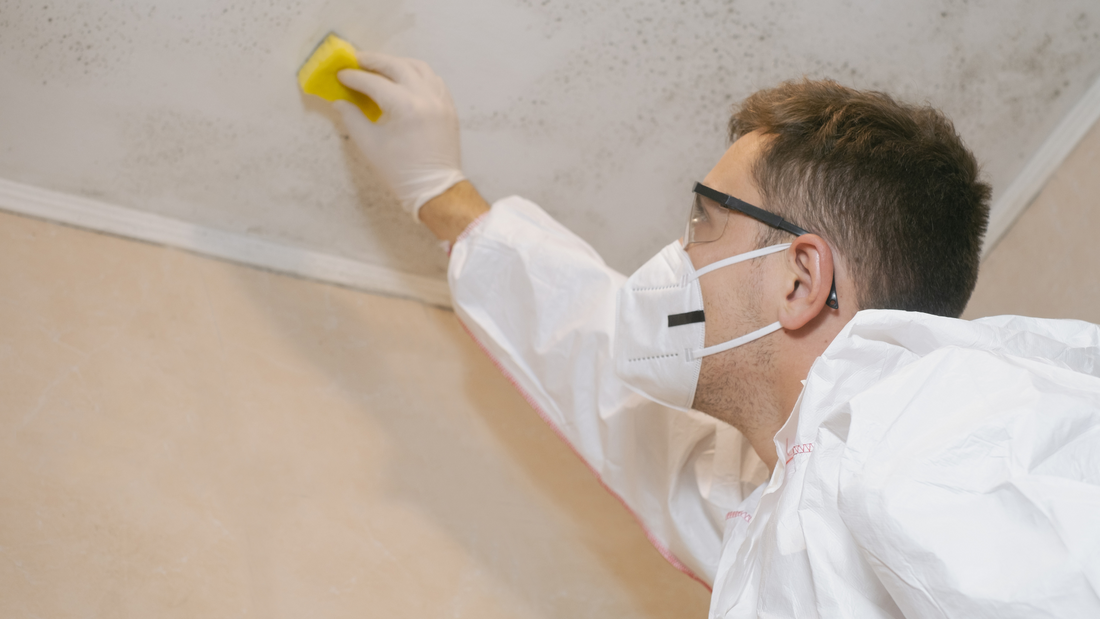
What Happens When Mold Is Missed in a Home Inspection? A California Buyer’s Wake-Up Call
Buying your first home should be a milestone—not a health risk. But for some new homeowners, that dream turns into a costly nightmare. One of the most frustrating scenarios is discovering mold and moisture damage after closing that was never disclosed by the seller or caught by the inspector.
Here’s what happened to one California couple, and what homebuyers, home inspectors, and real estate agents need to understand about mold, liability, and insurance.
The Situation: What Was Missed
A couple in the Bay Area moved into their newly purchased home and started noticing frequent headaches. Concerned, they hired a mold inspector. The results?
- High levels of moisture and mold in the master bedroom and their baby’s nursery
- Multiple stucco cracks, failing caulking, and visible water penetration along an exterior wall
- A major crack in the brick foundation
None of this was reported in their original home inspection.
Why Didn’t the Inspector Catch It?
There are a few possibilities:
- No mold test was performed. Mold testing is often an add-on service, not part of a standard inspection.
- Exterior damage was missed. If the stucco cracks and caulking failure were visible, the inspector should have reported them. If not, it may raise questions about negligence.
- Inspectors work under liability limits. Most inspection contracts contain language that limits their legal responsibility and excludes certain conditions they can't see or access.
This doesn’t mean they can’t be held accountable—but it does mean homeowners need to understand what is and isn’t covered when they hire an inspector.
Can the Buyer Take Legal Action?
Yes, but it’s complex. Here are the most likely options:
1. Pursue the Home Inspector
If the inspector missed visible exterior damage that any competent professional should have caught, there may be grounds for a claim.
- Review the inspection contract and report
- Document what was visible and what was omitted
- Speak with a real estate attorney familiar with inspector liability in California
2. Pursue the Seller (With Proof)
To hold the seller accountable, the buyer would need to prove that the seller:
- Knew about the mold or moisture intrusion
- Intentionally concealed the issue (e.g., painted over visible mold or hired someone to do a quick cosmetic fix)
This often requires a paper trail or eyewitnesses, like previous contractors or neighbors.
3. File a Homeowners Insurance Claim
Unfortunately, most standard homeowners insurance policies do not cover mold, especially if it’s due to long-term maintenance issues. But it may still be worth checking:
- Was mold caused by a sudden and accidental event (like a burst pipe)?
- Are there water intrusion endorsements in the policy?
If you're not sure, ask an agent. Many of our clients have no idea what their policy actually excludes until it’s too late.
What Real Estate Agents Need to Know
Buyers trust you to help them avoid situations like this. Here’s how you can protect them:
- Encourage mold testing on older homes or properties with any history of water damage
- Recommend independent inspectors not connected to either agent
- Warn buyers about what is and isn’t included in a general inspection
When in doubt, the cost of a mold test is worth avoiding a $10K+ remediation project later.
What Home Inspectors Can Do Better
Home inspectors are in a tough spot: they’re expected to be thorough, but often limited in what they can inspect. Here’s what we recommend:
- Be clear about what’s included and what’s not
- Flag potential water intrusion areas, even if mold isn’t visible
- Recommend further evaluation when there are exterior cracks, stains, or high humidity areas
You don’t need to guarantee mold detection—you just need to help the buyer know when to ask deeper questions.
When to Bring in a Mold Inspector
If any of the following are present, the buyer should hire a separate mold inspection company:
- Musty odor
- Past water damage
- Visible staining or bubbling on walls
- High humidity levels
- Recent remodel or repainting (especially if the seller did the work themselves)
Also, many mold specialists now use drones for roofs and crawl bots for tight crawlspaces—perfect for areas general inspectors can’t reach.
Protect Yourself Moving Forward
Buying a home without knowing what’s behind the walls is always a risk. But that risk increases when mold, moisture, and missed exterior damage are in play.
For real estate agents, inspectors, and homeowners: transparency, early testing, and clear documentation are the best ways to protect yourself from costly surprises.
If you're in California and unsure about your coverage or options:
Get a free, no-obligation homeowners insurance quote.
Referral partners: Download our Referral Partner PDF and join the program by filling out the form.
We're here to protect both your clients—and your reputation.
Disclosure: This article mentions independent professionals and businesses for informational purposes only. No referral relationship or compensation exists between Farmers Insurance - Young Douglas and the parties mentioned.
